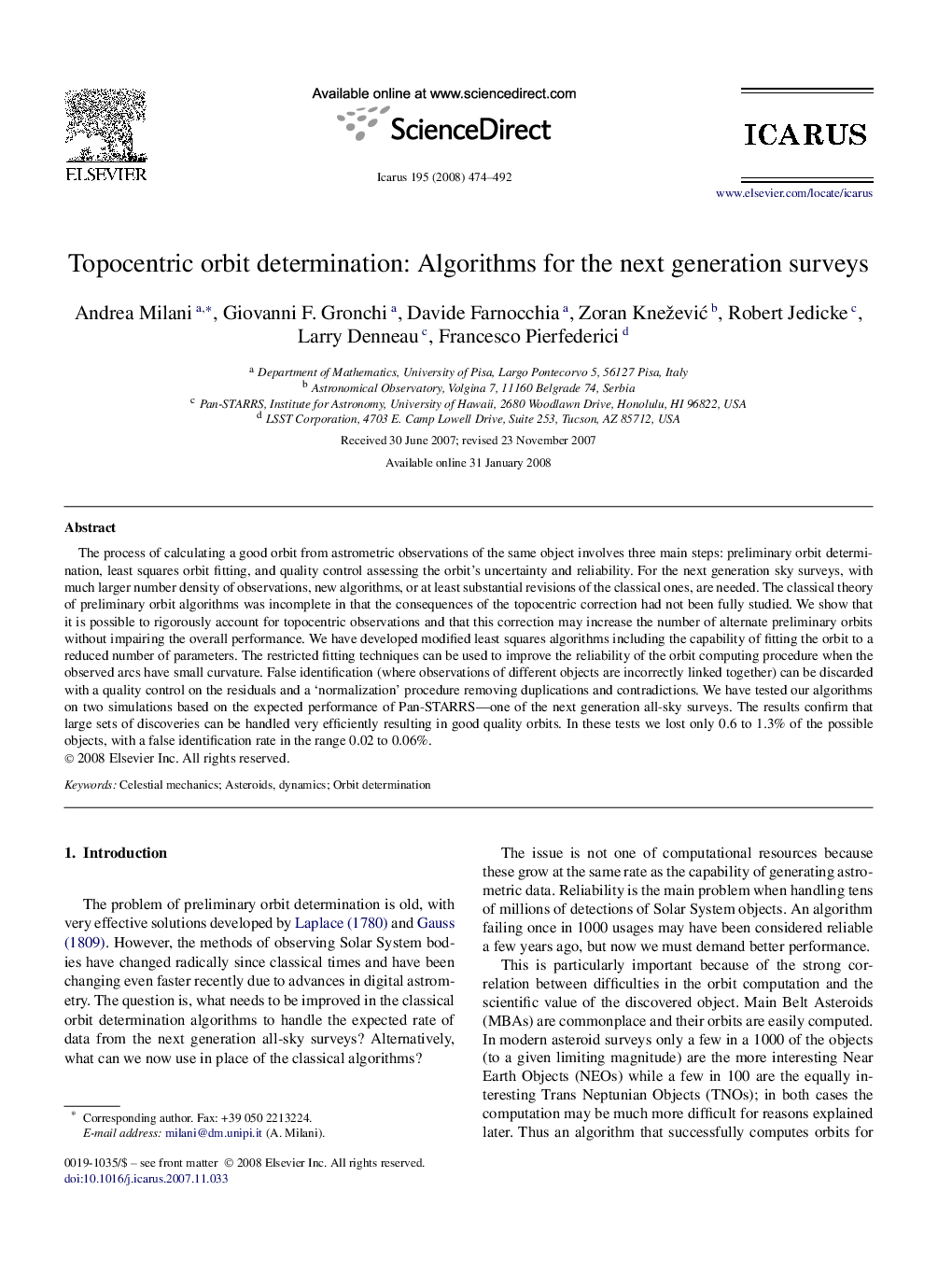| Article ID | Journal | Published Year | Pages | File Type |
|---|---|---|---|---|
| 1775087 | Icarus | 2008 | 19 Pages |
The process of calculating a good orbit from astrometric observations of the same object involves three main steps: preliminary orbit determination, least squares orbit fitting, and quality control assessing the orbit's uncertainty and reliability. For the next generation sky surveys, with much larger number density of observations, new algorithms, or at least substantial revisions of the classical ones, are needed. The classical theory of preliminary orbit algorithms was incomplete in that the consequences of the topocentric correction had not been fully studied. We show that it is possible to rigorously account for topocentric observations and that this correction may increase the number of alternate preliminary orbits without impairing the overall performance. We have developed modified least squares algorithms including the capability of fitting the orbit to a reduced number of parameters. The restricted fitting techniques can be used to improve the reliability of the orbit computing procedure when the observed arcs have small curvature. False identification (where observations of different objects are incorrectly linked together) can be discarded with a quality control on the residuals and a ‘normalization’ procedure removing duplications and contradictions. We have tested our algorithms on two simulations based on the expected performance of Pan-STARRS—one of the next generation all-sky surveys. The results confirm that large sets of discoveries can be handled very efficiently resulting in good quality orbits. In these tests we lost only 0.6 to 1.3% of the possible objects, with a false identification rate in the range 0.02 to 0.06%.
